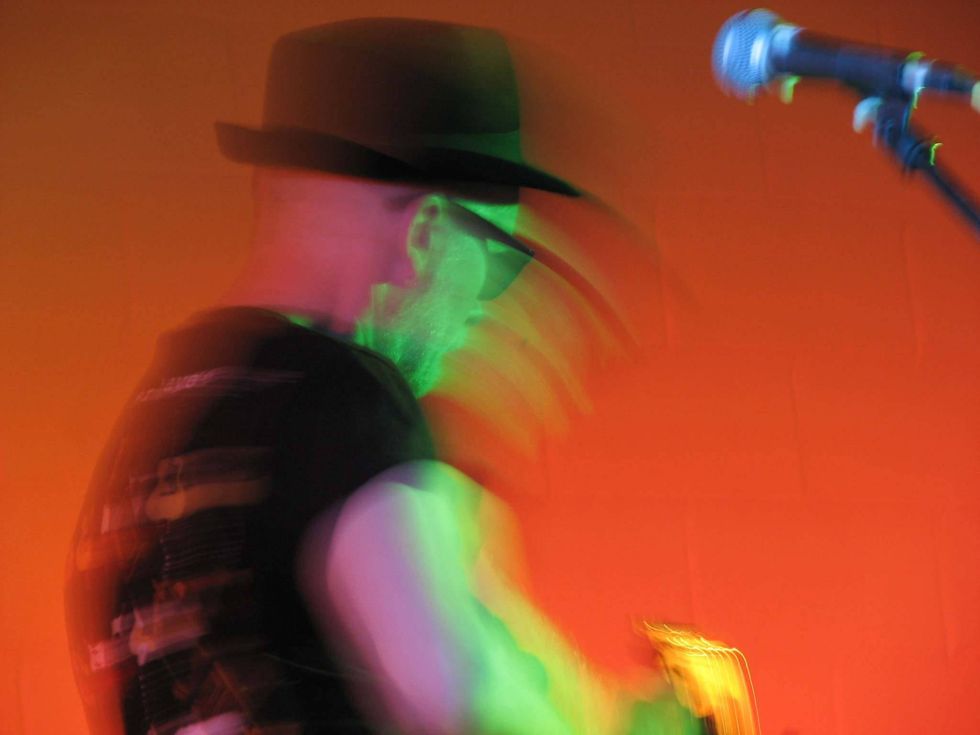I’ve spent most of my bass-playing life reproducing other people’s bass parts. The older I get, the more I just use the original recording as a reference and ultimately put my own spin on it.
Learning classic-metal riffs, synth-bass parts from pop records, melodic lines on modern country records, syncopated R&B grooves—and everything in between—will provide you with a vital reference guide you can draw on when you need to create an original bass part for a recording, writing, or jam session. Instead of building from scratch, you start with a template based on an approach or line you already know. You have the option to tweak the line substantially or reinvent it completely, all while staying in the same vein as your template.
This method has proven itself exceptionally useful for me on many Nashville recording sessions that often require tracking many songs in a three-hour period. There are, however, times when a traditional approach to a bass part simply won’t do the job and you have to dig deeper into the creative zone. Here are a few techniques I use to generate slightly more left-field, artistic approaches to a song.
Offbeat drops. As bassists, we’re conditioned to play with the kick drum (as we should be). But when I’ve tried my usual techniques for creating a line and nothing seems to work, I look for places where nobody else is playing—such as upbeats and holes usually reserved for anything but bass guitar—and I try to drop in bass notes there instead of where I’d normally play. This technique can certainly disrupt a groove if used in the wrong spot, but it can also be the miracle cure for a song.
The register swap. When I record what I perceive to be a standard pop, country, or rock track, I normally play the verses in the middle register, the choruses down low, and maybe go up high for a more melodic approach during the breakdown or third verse. This approach often works, but sometimes it has to be turned on its head. For example: playing the verse on my 5th string while I play the chorus high up on the neck to purposely make it smaller, more fluid, and less tight—the opposite of what most songs need. Keep in mind that when playing high-register melodies in a section where the fundamentals normally go, one has to be very careful not to step on other musicians’ toes.
The “cello” approach. Maybe the keyboardist on the session is using a soft pad throughout a song with very little rhythmical content from the drums. Here, a floating low-end can feel better than a traditional bass part that emphasizes the notes’ attack. In such cases, I’ll sometimes use a volume pedal to fade into every note. The trick is to time the plucking slightly before the beat so you can fade in the note right around the actual downbeat. Using the volume control on your bass works great for this as well.
The chordal approach. Sometimes a song begs you to play the bass line and the color note of the chord. For example, tenth intervals (which are the root note and the third of the chord moved up an octave) are very effective in many styles of music. Lou Reed’s classic “Walk on the Wild Side” is a good example: It has an upright bass playing the root note and a fretless bass playing the color tone up high, but the effect is also completely achievable playing tenths with one bass. Also, involving the chord tone as an element inside a more traditional one-note-at-a-time bass part can work wonders too. Tony Levin’s line on Peter Gabriel’s “Don’t Give Up” alternates major and minor thirds in the upper register in the middle of a muted, pentatonic line. It carries the song and is tremendously original.
No bass required? Taking yourself out of the equation isn’t necessarily musically satisfying, but it’s sometimes necessary. When Prince was asked why there isn’t bass on his pop-funk classic “Kiss,” he simply replied, “I tried it, and it didn’t work.” As a producer, I’ve sometimes gone back over a session and muted the bass part I played because entire verses or even choruses sounded better sans bass. Even if you don’t pull a Prince and leave the bass out completely, removing it for most of the song can be very effective. Lately the charts have been full of songs where the verses are bass heavy and some choruses are bass-free sing-alongs. Check out Rihanna’s “Only Girl (In the World)” for an example.
There are countless approaches to creating artistic bass lines and these are just a few ideas to experiment with. It’s important to keep one thing in mind when creating an off-the-wall, outside-the-box bass part: You should know the rules before you break them.












![Rig Rundown: Russian Circles’ Mike Sullivan [2025]](https://www.premierguitar.com/media-library/youtube.jpg?id=62303631&width=1245&height=700&quality=70&coordinates=0%2C0%2C0%2C0)







